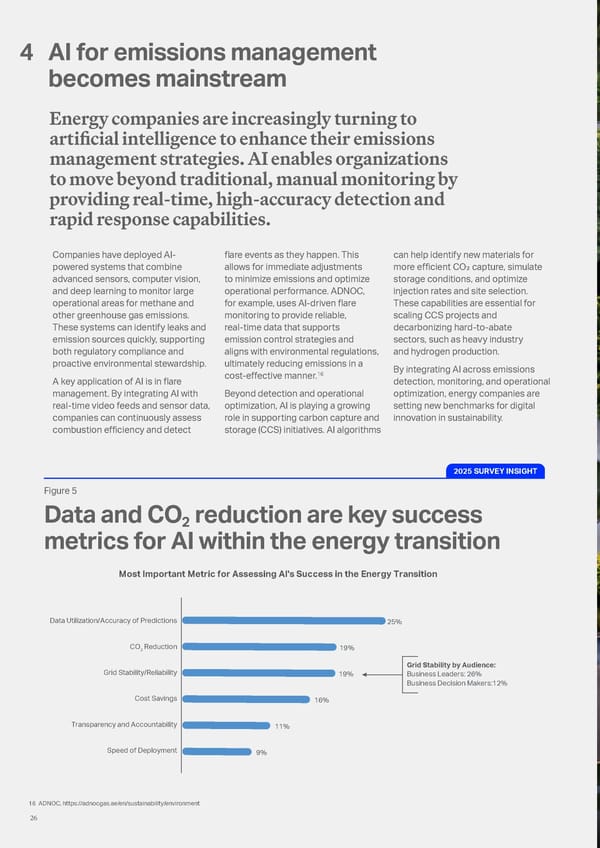Data and CO2 reduction are key success metrics for AI within the energy transition Figure 5 Companies have deployed AI- powered systems that combine advanced sensors, computer vision, and deep learning to monitor large operational areas for methane and other greenhouse gas emissions. These systems can identify leaks and emission sources quickly, supporting both regulatory compliance and proactive environmental stewardship. A key application of AI is in flare management. By integrating AI with real-time video feeds and sensor data, companies can continuously assess combustion efficiency and detect flare events as they happen. This allows for immediate adjustments to minimize emissions and optimize operational performance. ADNOC, for example, uses AI-driven flare monitoring to provide reliable, real-time data that supports emission control strategies and aligns with environmental regulations, ultimately reducing emissions in a cost-effective manner.16 Beyond detection and operational optimization, AI is playing a growing role in supporting carbon capture and storage (CCS) initiatives. AI algorithms can help identify new materials for more efficient CO₂ capture, simulate storage conditions, and optimize injection rates and site selection. These capabilities are essential for scaling CCS projects and decarbonizing hard-to-abate sectors, such as heavy industry and hydrogen production. By integrating AI across emissions detection, monitoring, and operational optimization, energy companies are setting new benchmarks for digital innovation in sustainability. 4 AI for emissions management becomes mainstream Energy companies are increasingly turning to artificial intelligence to enhance their emissions management strategies. AI enables organizations to move beyond traditional, manual monitoring by providing real-time, high-accuracy detection and rapid response capabilities. Grid Stability by Audience: Business Leaders: 26% Business Decision Makers:12% Most Important Metric for Assessing AI's Success in the Energy Transition Data Utilization/Accuracy of Predictions CO2 Reduction Grid Stability/Reliability Cost Savings Transparency and Accountability Speed of Deployment 25% 19% 19% 16% 11% 9% 2025 SURVEY INSIGHT 16 ADNOC, https://adnocgas.ae/en/sustainability/environment 26
 Powering Possible 2025: Unleashing AI for Energy and Energy for AI Page 25 Page 27
Powering Possible 2025: Unleashing AI for Energy and Energy for AI Page 25 Page 27